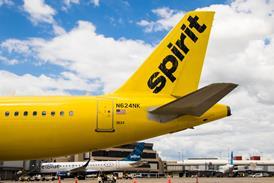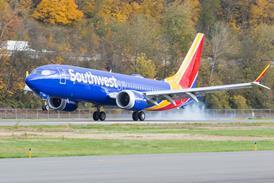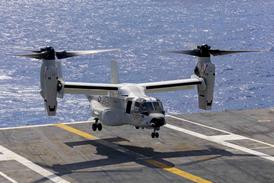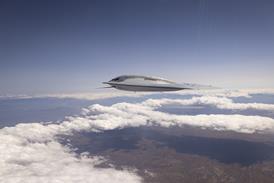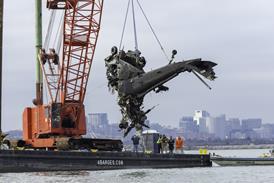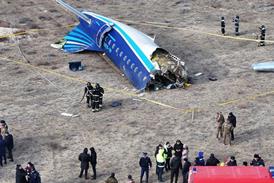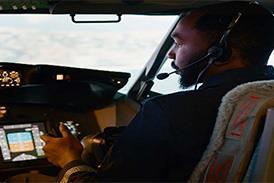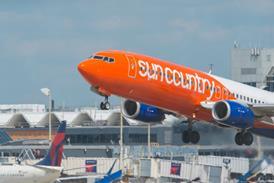China continues its work with high profile aircraft designs, as the so-called J-36 “sixth-generation” fighter continues to mount sorties in the skies above Chengdu.
The jet first appeared on 26 December 2024 in amateur imagery posted on Chinese social media – despite Beijing’s ever-tighter restrictions about sharing sensitive images on-line.
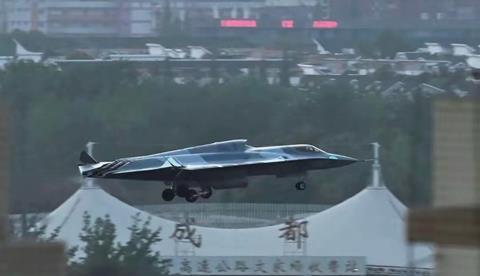
The J-36 is not an official designation, but rather a rough consensus formed by the community of open-source China aerospace watchers. The jet conducted additional flight tests in March and April, with some particularly clear images emerging. While imagery from Chinese social media is always to be treated with caution, China aviation watchers feel that at least some of the images can be treated as genuine.
The J-36, apparently developed by AVIC’s Chengdu fighter unit, is big, with cranked delta wings and three engines.
The lack of vertical stabilisers and the presence of chines forward of the leading-edge extension are highly suggestive of a low observable platform. In addition, pictures suggest that the aircraft’s electro-optical targeting system (EOTS) is located forward of the canopy and flush with the fuselage.
This is a marked change from other stealthy types, namely the Lockheed Martin F-35 and Chengdu J-20, which feature EOTS sensors that protrude from beneath the nose.
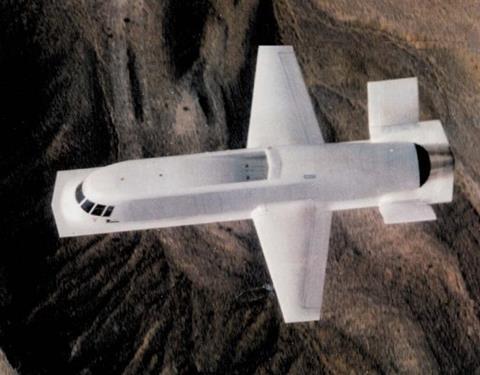
The location of the aircraft’s three intakes clearly suggests the use of S-ducts that aim to obscure the engine faces from radar waves. Signature reduction is also a priority for the aircraft’s engine exhaust, which vent across a wide deck clearly intended to reduce the aircraft’s infrared (IR) signature as seen from below.
The exhaust deck arrangement is reminiscent of two Northrop Grumman experimental aircraft: Tacit Blue – a 1980s programme that aimed to create a stealthy battlefield awareness aircraft – and the YF-23 – an iconic fighter design that lost to the Lockheed F-22. The Lockheed F-117 also featured a deck below its distributed thrust system, again to reduce its IR signature from below.
The large distances that would be involved in an Asia-Pacific war likely inspire the J-36’s unique tri-engine configuration, which boosts maximum take-off weight and power. Unlike the subsonic Northrop B-21 bomber, which can make do with two engines, the J-36 requires supersonic, high thrust-to-weight performance, while also providing ample electricity generation for sensors, high speed datalinks, and weapons.
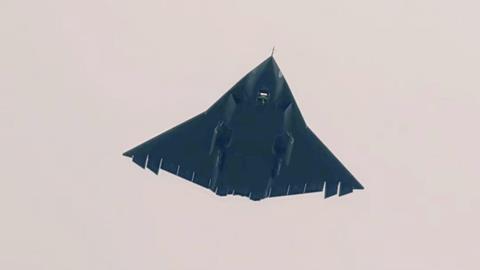
On-line speculation suggests that the jet is powered by a trio of Shenyang WS-15s, the ultimate powerplant for China’s key stealth fighter, the J-20. Although Chinese engine performance is an open question, the WS-15’s maximum thrust is understood to be 18.4t (180kN).
Alternatively, it is possible that the jet in the skies above Chengdu has three WS-10s. While less powerful, with a thrust of 15t, the WS-10 is more mature than the WS-15, and possibly better suited for early test purposes.
The single item that has generated the most comment about the J-36 is its dorsal intake.
Dorsal intakes on combat aircraft are novel, but not exactly new. In the 1950s the North American F-107 Ultra Sabre – a derivative of the F-100 – featured a dorsal intake, which allowed space for a nuclear weapon to be conformally mounted below the fuselage. The jet, despite giving a good account of itself in tests, ultimately lost out to the Republic F-105 Thunderchief.
The Boeing Bird of Prey, a secretive 1990s experimental fighter programme, featured a dorsal intake for its single powerplant.
Dorsal intakes offer some advantages. Their location high on the fuselage reduces the foreign object debris ingestion risk on the ground, although with the J-36 this is offset by the two underwing intakes. The dorsal location of the intake will also offer more internal stores volume – which is all but certainly why the J-36’s middle intake is located on the aircraft’s spine and is not a ventral scoop as with the Lockheed F-16.
On the other hand, airflow to the dorsal intake may be disrupted during high angle of attack manoeuvres. The additional intake will also increase drag, and the presence of three engines – one inconveniently squeezed in the middle – could increase sustainment complexity.
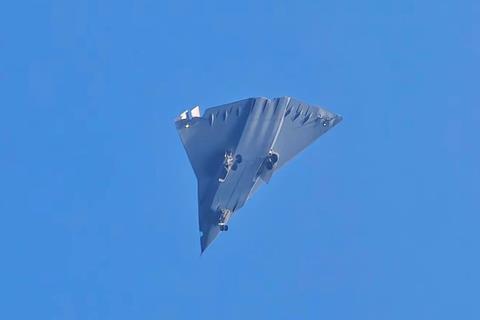
Further, the dorsal intake all but eliminates the pilot’s view to the rear. There is an open debate to whether the J-36 will have two pilots sitting side-by-side, but the canopy arrangement and dorsal intake suggest restricted visibility. This disadvantage will all but certainly be offset by sensors distributed around the aircraft.
In March, the officer in charge of the US Air Force’s fighter fleet, General Kenneth Wilsbach, said that that service considered the aircraft and another new type that appeared above Shenyang as “sixth-generation” platforms designed for air superiority.
If so, the J-36 could one day be armed with long-range air-to-air weapons, namely the developmental PL-21, a secretive ramjet-powered missile that is analogous in performance to the MBDA Meteor.
For over a decade the J-20, boasting dramatic size and canards, has been regarded as China’s most iconic combat aircraft. As test flights continue, however, the J-36 – or whatever it is designated – looks set to supplant its older sibling in the eyes of China’s aerospace watching community.
The aircraft, no doubt, will also be on the minds of US planners as they also develop new manned and unmanned combat aircraft.

